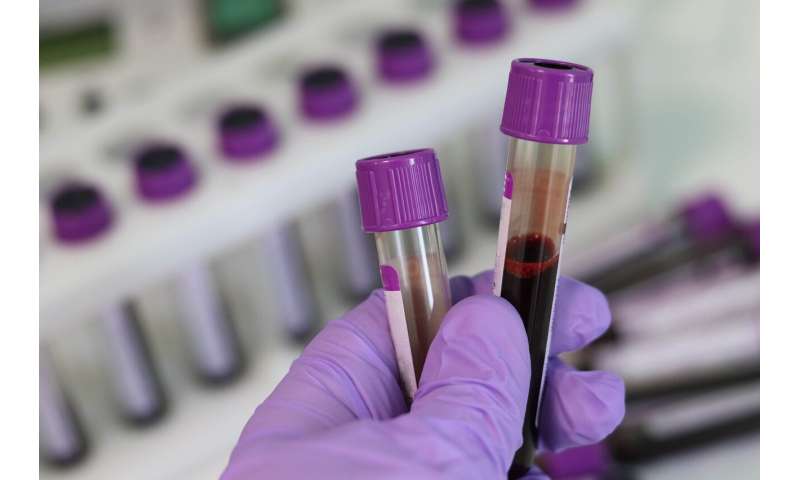Standalone D-dimer test strategy may simplify diagnosis of deep vein thrombosis


New research suggests that it may be possible to simplify the diagnosis of deep vein thrombosis (DVT) without compromising accuracy. Contrary to the standard practice of administering several tests to diagnose DVT, using only a D-dimer blood test may help health care providers identify patients who require additional screening, according to a new study in Blood Advances.
DVT occurs when a blood clot forms in a deep vein, typically in the leg or arm. It is relatively common, affecting on average one or two people out of every 1,000 people. There are many factors that increase the risk of DVT, such as older age, immobility, surgery, pregnancy or recent birth, hormonal contraception, and cancer. It is important to test for DVT since blood clots from the leg can travel up to the lungs and block the arteries there, which may be fatal.
Current guidelines for diagnosing DVT recommend conducting pre-test probability assessments before proceeding with D-dimer blood tests and/or ultrasound examinations. Pre-test probability assessment entails determining whether the patient has common signs and symptoms of DVT, and thereby designating them high or low risk. Traditionally if the patient is deemed high risk for DVT, they are referred directly for ultrasound, whereas remaining patients undergo D-dimer screening to determine whether subsequent screening including ultrasound examination is needed. This potentially complex and time-consuming nature of this full diagnostic workup can present challenges in a busy emergency department setting.
“Our study aimed to assess whether diagnosing DVT could be made easier,” said study author Synne Fronas, MD, of the department of emergency medicine of Østfold Hospital in Norway. “We examined the strategy of only using the blood sample D-dimer as the first test to decide which patients need ultrasonography to confirm or rule out DVT.”
D-dimer is a protein fragment that is made when a blood clot dissolves. It can be measured in a simple, widely available blood test. If D-dimer is found to be positive, meaning higher levels than normal, it indicates that there may be a blood clot present.
The researchers examined 1,397 individuals who were referred to the emergency department of Østfold Hospital in Norway for suspected DVT between February 2015 and November 2018. Patients with positive D-dimer were referred for whole-leg ultrasounds to further screen for DVT. Patients with negative D-dimer results, or with positive D-dimer results but negative ultrasounds, were discharged without taking clinical pre-test probability into account. Of the 1,113 people with normal workup according to the strategy, only six went on to develop DVT in the subsequent three months, suggesting that the D-dimer test may be a feasible first step in diagnosing the condition.
“To our knowledge, this is the first large prospective study to assess the clinical outcomes of a diagnostic strategy using standalone D-dimer,” said Dr. Fronas. “This method could result in fewer unnecessary ultrasound examinations because not all high-risk patients are referred—only the ones with positive D-dimer.”
The research team noted that an important caveat to their study is its assessment of the use of D-dimer tests in only those patients who were referred to the emergency department. In other words, the patients were already pre-selected with suspected DVT. Dr. Fronas and the team caution that D-dimer alone may not be useful for a general population patient group.
Source: Read Full Article